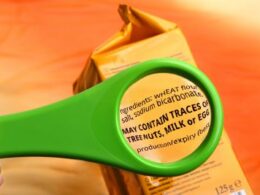Food Traceability: Common Challenges
Traceability systems can be quite complex and challenging to implement, even though laws and best practices exist. There are several challenges that food-handling businesses may face, but don’t worry, there are solutions for those challenges.
Challenge 1:
Creating and maintaining consistent recordkeeping procedures can be a huge challenge in traceability. Ensuring everyone understands their responsibilities pertaining to recordkeeping, inconsistent information being recorded, and poor penmanship in manual records can all contribute to this problem.
Here are some tips to counteract these problems:
- Document all traceability system requirements clearly, including which information to include in which records.
- Train all employees on the traceability system put in place at that location.
- Use printed data, labels, and automated systems whenever possible. Printing labels from digital systems with pre-recorded information can take less time than manually filling out records and is less prone to human error. Plus, a quality printed label is much more legible than handwritten notes.

Challenge 2:
It’s common for issues to go undetected for a period of time, which can be caused by numerous situations. Incomplete or manual records can make it difficult to trace food back to the origin of the problem. To avoid these problems, all businesses should have a method for looking up traceability information promptly and easily. Ensuring that all individuals comply with recordkeeping requirements is critical in taking timely action on a food quality problem.
Challenge 3:
Poor communication between entities at various stages of the supply chain can throw the traceability of a product off course, even if most organizations in the supply chain follow stringent recordkeeping guidelines. To ensure that all touchpoints in the supply chain are recorded accurately, companies should never accept food that does not have all appropriate information about the supplier. Adopting digital technologies that make it easy to record, look up, and share information can also improve communication lines between various entities throughout the supply chain.
Challenge 4:
Poor inventory management can lead to oversupply of certain goods and undersupply of others, which is a common challenge in any industry involving physical products. A strong inventory management system is essential for keeping track of stock levels and helps companies carefully plan their orders. A system that allows businesses to scan labels upon arrival, so they are immediately recorded gives managers and proprietors accurate information about what’s in stock and what’s not.

Knowing the guidelines, industry standards, and obstacles that come with food traceability systems is crucial in creating a suitable system for your business. But drafting a system is just the first step. It cannot be put into action without dependable equipment that guarantees compliance. Accurate record keeping, documentation, and labelling are necessary components of a food traceability system. Employing a reliable printer or coder is important to ensure all required information is correctly displayed and recorded within the organisation.
Contact PrintDATA for more information about the printers, coders and labellers that will help you achieve compliance in food traceability without much effort.







